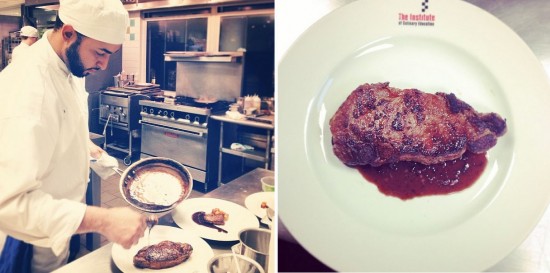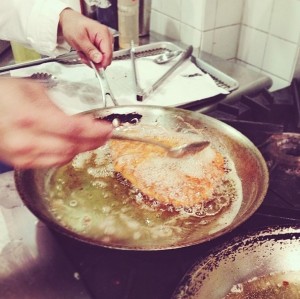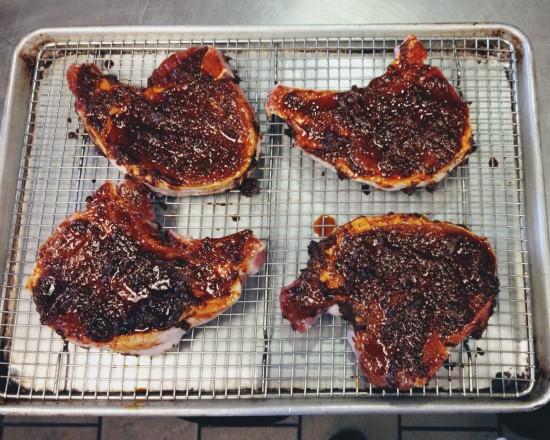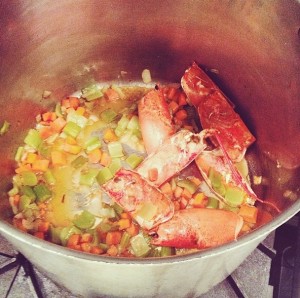Building Flavor
Life as a Culinary Student
Whether you’re a professional cook or just an eager eater, we all have an intense, multi-layered relationship with flavor. There are tastes that remind us of childhood, foods that terrify or intrigue us with their strangeness, and flavors we crave time and time again. But how as chefs do we harness flavor? Where does it come from?

Of all the significant sources of flavor, the first (and possibly, most important) is the fond. This word, which literally means “the base” in French, refers to the brown bits created when you heat foodstuffs and they stick to the bottom of your pan.
While many cooks mistake the fond for an inconvenience best removed with a bit of elbow grease, savvier cooks learn to deglaze the pan and capture that flavor. That’s right—add just a little wine, stock or other liquid to your pan and those brown bits loosen up, forming the flavor-forward base for a delicious sauce.
But the fond is not the only source of flavor. Proteins can be fried, deep fried, grilled, roasted, and prepared in a wide range of different fashions, all that build flavor in their own distinct way. Take frying for example: the secret here is, as Chef Chris likes to say, “goooolden brown.”
In fact, Chef insists there “is no other color in dry-heat cooking.” But anyone who has ever made chicken cutlets knows how hard it is to get even coloring. The simple tip here is basting—using your spoon to toss the hot oil onto the light-colored spots on your crust.
Maintaining high heat is also key to keeping that layer of breading nice and crunchy. On the other hand, if you’re game to submerge your protein entirely, deep-frying (again, at a hot, consistent temperature) is perhaps the easiest way to get that even-colored golden brown.

Another high-heat cooking method that builds flavor? Grilling. We all know and love those little black cross-hatches, that inimitable charred flavor. After just a few minutes on a grill, a thin little piece of chicken paillard becomes a juicy, earthy, healthful meal.
If you’re stove-top grilling, it’s likely you’ll also do a little fire-fighting. Keep things hot. Keep your protein lightly oiled, and above all, don’t pour oil directly onto the grill. (Brush or dab it on.) Otherwise, you might as well just incinerate your food in a fire pit.

Now with any of these techniques, the magical combination of salt and fat are essential. Salt helps bring out the inherent flavors of your food, so using it during the cooking process—not just at the end for finishing—is essential.
Sprinkle a little salt on freshly fried foods, and it melts right into the piping hot crust. Toss some salt on your steak before it hits the grill, and you’re sure to get that satisfying sizzle. (Moreover, contrary to popular opinion, the amount of salt used in restaurants is hardly harmful. It’s processed foods that will do you in.)
Fat helps lubricate your cooking surface (preventing proteins from sticking and burning) and the wide-ranging flavors and smoke-points of butter and oils help shape the form of your final dish. A little canola goes a long way in grilling, helping you get those gorgeous cross-hatches on everything from zucchini to salmon.
Finish your pan sauce with butter, and it will thicken right up. Deep-fry your foods in peanut oil and they’ll not only be crispy, but also have an added nutty flavor.

It’s not just heat, salt, and fat that build flavor. Don’t forget the power of infused liquids, like stock. Having the right stock can transform your sauce from mundane to masterful. Veal stock, in particular, is one of the key ingredients that make French pan sauces so delicious.
And, as mentioned before, without liquid to free it, your fond would just be stranded little bits of wasted flavor. Herbs, aromatics, and spices can also elevate a dish from basic to delicious. A crust of parsley, butter, and breadcrumbs boosts the juicy appeal of rack of lamb. A spicy wet rub of chilies and oil brings bold spice to a pork chop. And a dash of crispy sage brings out the best in a roasted sweet potato.
In short, it’s not just about the quality of our food or how well we prepare our mise en place, it’s also about how we “manage our energy” (i.e. the heat), as Chef Michael Garrett likes to say.
It’s when we add the salt. Which and how much oil we use. That extra clove of garlic or snip of parsley. All these disparate steps work together to bring out the best in our food, and, as future chefs, we’re learning to use them to our advantage, one dish at a time.

